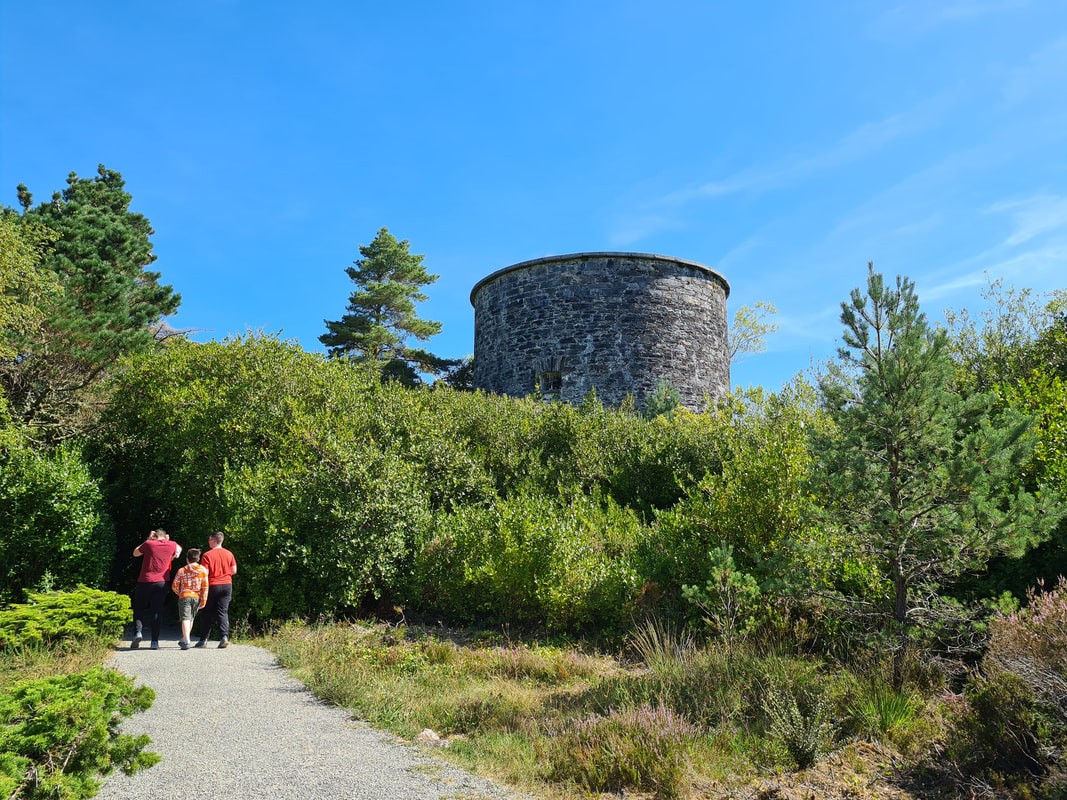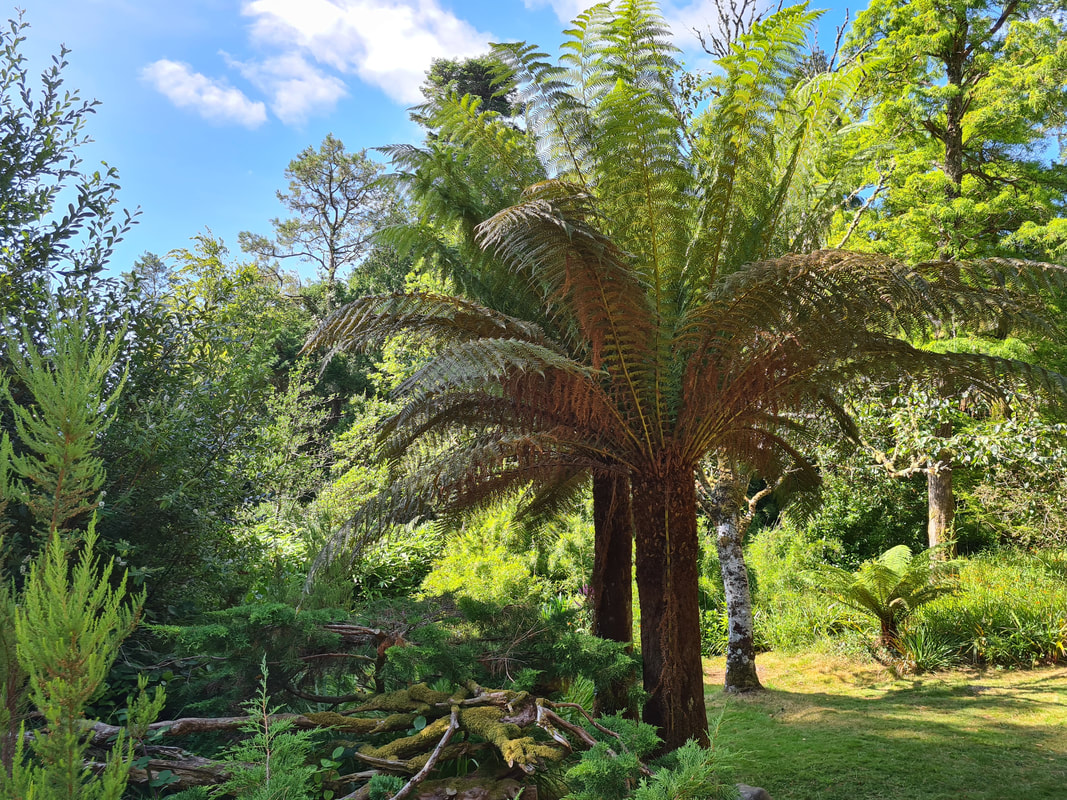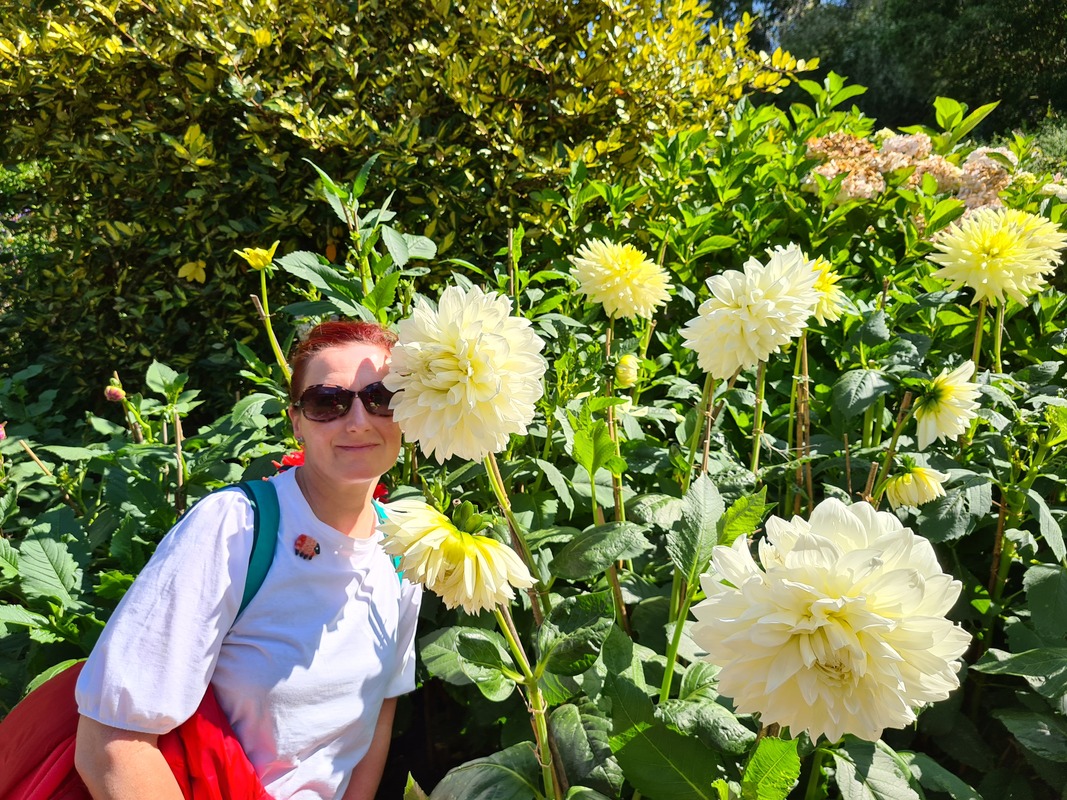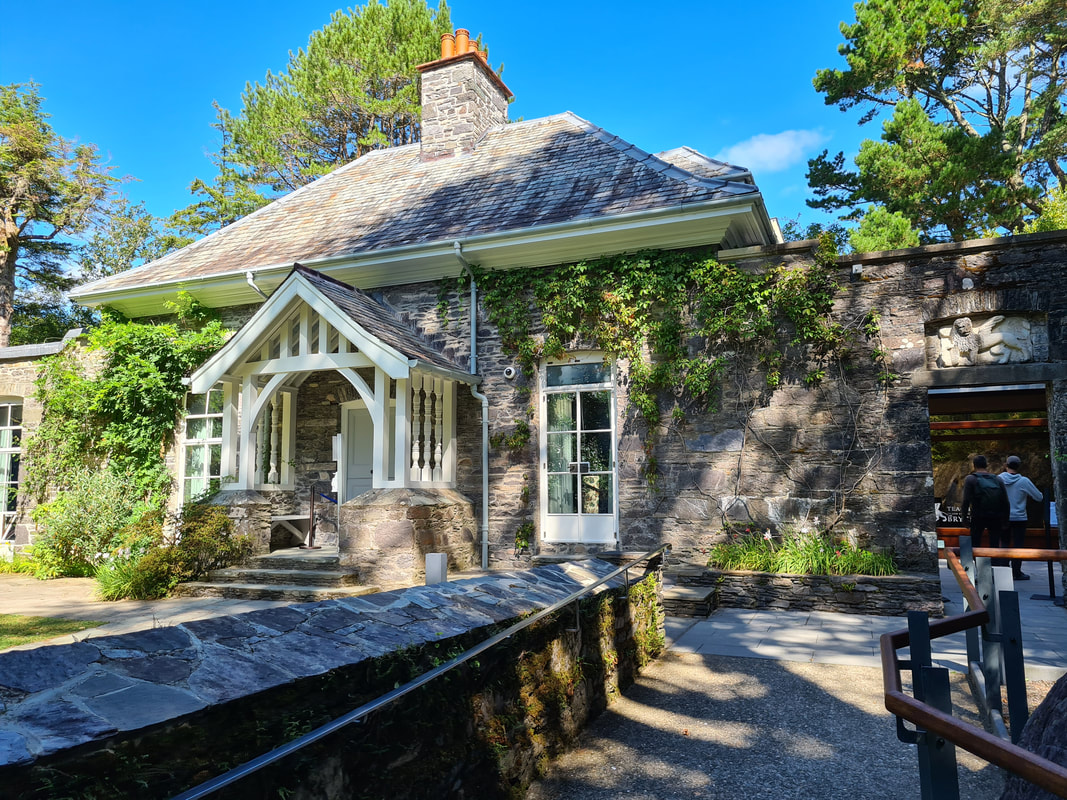|
Located in the sheltered natural harbour of Glengarriff in Bantry Bay, Garinish Island is a world-renowned garden Island famous for its diverse plant selection. When we arrived in the small village of Glengarriff early in the morning, the temperature was already sitting at an exceptional 24 degrees. Where Europe had been in the grip of a devastating heatwave, the week of high temperatures we got during our stay in County Kerry and County Cork made for a welcome change. With cold drinks and snacks in our backpack, we walked the short distance from the village to the Blue Pool where we would catch the ferry to Garinish Island. What is special about this area is that the influence of the warm gulf stream has made it possible for sub-tropical plants to thrive making the area around Glengarriff an oasis of lush woodland which fringes the shoreline. On the many rocks, seals can be observed sunbathing while sometimes slipping into the water to cool down. The boat passed closely by some of these seals creating great excitement among the ferry passengers. So let us first explain the pricing to get on the island. First of all, you pay the ferry fee to one of the boat operators. Once you arrive on the island, you pay the OPW fee (Garnish Island (garinishisland.ie) ) which is always very reasonable priced. The gardens of Garinish came into existence some eighty years ago when the owners of the island decided to turn the barren island into a lush garden with the help of Harold Peto, an acclaimed architect and garden designer. Where the current garden is renowned for its diverse range of plants and colours, the island is now a lush paradise for any plant-lover. Arriving on the island, we headed first to the famous Italian garden where we could be forgiven to think we were actually in Italy. With a blue sky above us and temperatures close to 30 degrees, it felt more like the Mediterranean than Bantry Bay. The Italian styled gardens are just stunning with pathways winding around the landscape. Around the Island are some fascinating buildings such as the Grecian temple, the Clock tower nearby the walled flower garden, the Casita and the original Martello Tower. The Grecian temple is a roofless rotunda which overlooks the sea and the Caba Mountains. The African Lilies provide a magnificent show of color. Returning from the temple, we made our way over to the Martello Tower passing through a long glade known as the "Happy Valley". The Happy Valley has an extensive collection of plants from all over the globe. On the left you will find the South American plants like the Chilean fire-tree, Wintergreen, Myrtle,... On the right, a group of Japanese black pines provide shelter from the sweltering temperatures (and believe us, normally it will be providing shelter from the rain). After the Happy Valley, we scaled a long flight of steps leading us to the highest point of the island. Here you will find the Martello Tower which was built by the British War Office around 1805 as a defence against the feared Napoleonic invasion. The Tower is in an excellent state of preservation and after climbing the internal spiral stairs, you will be welcomed with stunning panoramic views. Next, we visited the walled garden which is home to an exceptional collection of climbing plants and huge Dahlia's. A fine double-sided herbaceous border runs through the middle of the walled garden. On each of the four sides of the walled garden are towers each with its own unique design. The taller Northwest tower was to be the clock Tower After a couple of hours on the island admiring the many plants, we decided to head back to the main land where we went for a refreshing drink.
0 Comments
Leave a Reply. |
�
About the AuthorWe are Peter & Dolores De Bie. We love the great outdoors, discovering new parts of the world and writing about our adventures along the Wild Atlantic Way and further afield Categories
All
|
Contact us |
Where are our visitors from |
copyright © 2024 www.outdoorfitnesssligo.com
©Website design by Outdoor Fitness Sligo
©Website design by Outdoor Fitness Sligo












 RSS Feed
RSS Feed
